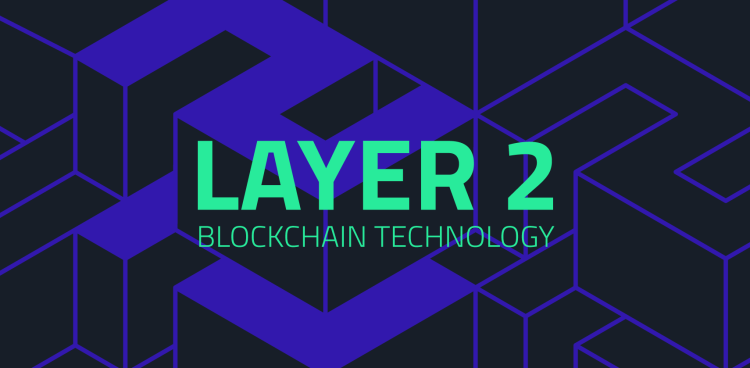Blockchain technology has proven itself to be a revolutionary innovation, offering decentralized, transparent, and secure systems for various industries. However, one of the major challenges blockchain faces is scalability. As blockchain networks like Bitcoin and Ethereum grow in popularity, the number of transactions increases, often leading to network congestion, slower transaction speeds, and higher transaction costs.
In response to these challenges, Layer 2 solutions have emerged as a promising way to scale blockchain technology while maintaining its core features of decentralization and security. But what exactly are Layer 2 solutions? How do they improve blockchain scalability? And can they truly help blockchain networks handle the massive volume of transactions required for mainstream adoption?
This article delves into the concept of Layer 2 solutions, exploring their role in scaling blockchain networks, improving transaction speed, and reducing costs. We will also examine some of the leading Layer 2 technologies and how they are shaping the future of blockchain scalability.
What are Layer 2 Solutions?
Before diving into the details of how Layer 2 solutions work, it’s important to first understand the structure of a blockchain network.
- Layer 1: This is the base layer of the blockchain, which includes the core protocol and consensus mechanisms. In the case of Ethereum, for example, Layer 1 handles transaction validation, security, and the overall operation of the network. However, as the network grows, scalability becomes a significant issue for Layer 1 alone.
- Layer 2: These are secondary frameworks or protocols built on top of Layer 1. They aim to handle transactions off the main blockchain, reducing congestion and improving the overall efficiency of the network. Layer 2 solutions process transactions faster and more cheaply while still ensuring that the results are ultimately recorded on the Layer 1 blockchain for security and finality.
In simple terms, Layer 2 solutions aim to offload transactions from the main blockchain, making them faster and cheaper, while still benefiting from the security and decentralization of the base layer.
How Layer 2 Solutions Improve Blockchain Scalability
The scalability problem in blockchain primarily arises from the limited throughput of most Layer 1 networks. For example, Ethereum can handle about 15-30 transactions per second (TPS) on its main chain, far fewer than traditional payment systems like Visa or Mastercard, which can handle thousands of transactions per second.
Layer 2 solutions address this by offloading some of the transactional load to secondary layers, ensuring the blockchain can scale without sacrificing security or decentralization.
1. Reducing Network Congestion
In a busy blockchain network, transaction congestion occurs when there are more transactions than the system can handle at a given time. This results in slower transaction speeds and higher fees as users compete to get their transactions processed quickly.
Layer 2 solutions solve this problem by processing transactions off-chain. For example, payment channels allow users to conduct multiple transactions without each one being recorded on the main chain, thus reducing the load on the Layer 1 network.
- Example: If two users are exchanging payments, they can open a payment channel on Layer 2. They can conduct several transactions between themselves, and only the final result (the net balance) is settled on the main blockchain. This significantly reduces congestion.
2. Improving Transaction Speed
Layer 2 solutions can drastically improve the transaction speed of blockchain networks by allowing transactions to be processed off-chain or in parallel without the need for consensus from the entire network.
- Layer 1 vs. Layer 2: While Layer 1 requires every node to validate every transaction (which slows down the process), Layer 2 solutions can reduce the number of nodes involved, thus speeding up the process.
For example, rollups (a type of Layer 2 solution) batch multiple transactions together and process them off-chain before posting a single aggregated transaction to the main chain. This allows the system to handle far more transactions per second.
3. Reducing Transaction Costs
Transaction costs, or gas fees, on blockchain networks like Ethereum can rise significantly when the network is congested. Since Layer 2 solutions reduce congestion by processing transactions off-chain or in smaller batches, they inherently reduce the overall cost of transactions.
- Example: When Ethereum’s Layer 1 network becomes congested, gas fees can skyrocket. However, Layer 2 solutions like Optimistic Rollups or ZK-Rollups can process transactions off-chain, reducing gas costs and passing those savings onto users.

Leading Layer 2 Solutions: How Do They Work?
There are several types of Layer 2 solutions, each using different technologies to scale the blockchain. Here are some of the most prominent approaches:
1. Payment Channels (e.g., Lightning Network)
Payment channels are one of the oldest and most well-known Layer 2 solutions. They allow two parties to create an off-chain channel for continuous transactions.
- Lightning Network (Bitcoin): The Lightning Network is a Layer 2 solution for Bitcoin, designed to solve scalability issues. It creates a network of bidirectional payment channels, allowing users to conduct off-chain transactions that are then settled on the Bitcoin blockchain later.
- How it works: Two users open a payment channel by locking a certain amount of Bitcoin into a multi-signature wallet. Transactions are conducted off-chain, and only the final state is recorded on the main blockchain. This allows for instant payments with low fees.
- Benefits: The Lightning Network can handle thousands of transactions per second, making it an efficient solution for micro-payments, remittances, and other use cases where speed and cost are important.
2. Rollups (Optimistic and ZK-Rollups)
Rollups are one of the most promising Layer 2 solutions, particularly for Ethereum. Rollups perform most of the transaction processing off-chain and then batch multiple transactions into a single proof that is posted on the Ethereum mainnet.
- Optimistic Rollups: Optimistic Rollups assume that all transactions are valid by default, and only disputes need to be reviewed. This significantly reduces the computational load on the main chain.
- Example: Optimism and Arbitrum are two prominent examples of optimistic rollups, both providing higher scalability and faster transaction processing for Ethereum.
- ZK-Rollups (Zero-Knowledge Rollups): ZK-Rollups use zero-knowledge proofs to bundle transactions off-chain and submit them in a compressed form to the main chain. This makes the process even more efficient, reducing gas fees and increasing transaction throughput.
- Example: zkSync and StarkWare are popular ZK-Rollup solutions for Ethereum that offer scalable, fast, and low-cost transactions while maintaining the security of the Ethereum blockchain.
3. Sidechains
A sidechain is a separate blockchain connected to the main blockchain (Layer 1) but with its own consensus mechanism. It allows users to transfer assets between the sidechain and Layer 1, facilitating faster and cheaper transactions.
- Example: Polygon (formerly Matic) is a well-known sidechain that is used to improve the scalability of Ethereum. It operates independently of the Ethereum mainnet but is linked to it, allowing for faster and cheaper transactions while leveraging the security of Ethereum.
4. State Channels
State channels are similar to payment channels but can be used for more complex transactions beyond simple payments. They allow participants to conduct off-chain interactions and only submit the final result to the main chain.
- Example: Raiden Network is an example of a state channel solution for Ethereum, providing scalable off-chain transaction channels for micro-transactions in real-time.
How Do Layer 2 Solutions Address Blockchain’s Key Challenges?
1. Scalability
Layer 2 solutions solve the scalability issue by offloading the computational workload from the Layer 1 blockchain. This allows networks to handle more transactions and scale to higher volumes without compromising security.
- Increased TPS: With Layer 2, the transaction throughput can increase by orders of magnitude, often allowing blockchain networks to handle thousands of transactions per second.
2. Speed
By processing transactions off-chain and only posting final results to the Layer 1 blockchain, Layer 2 solutions can dramatically reduce transaction times, making blockchain networks more suitable for applications requiring high speed, such as real-time gaming, finance, and micropayments.
3. Cost Reduction
Layer 2 solutions reduce congestion on the base layer and optimize the transaction process, leading to lower gas fees and cheaper transactions for users. By reducing the computational resources required for each transaction, the overall cost of using the network drops significantly.
Challenges and Considerations for Layer 2 Solutions
While Layer 2 solutions offer significant improvements in scalability, transaction speed, and cost, they are not without challenges:
- Security: Layer 2 solutions still rely on Layer 1 for finality and security, but there may be risks if Layer 2 protocols are not implemented properly.
- Complexity: Many Layer 2 solutions require complex infrastructure and integration with the underlying Layer 1 network, which can create challenges for developers and users.
- Decentralization: Some Layer 2 solutions may introduce a degree of centralization, particularly in cases where sidechains or payment channels are controlled by a limited set of participants or validators.
Conclusion: Layer 2 Solutions and the Future of Blockchain Scalability
Layer 2 solutions are pivotal in the journey toward achieving blockchain scalability. By offloading transactional burdens from the base layer, they provide a pathway for blockchains to scale efficiently while maintaining key principles like security and decentralization.
As the blockchain ecosystem continues to grow, Layer 2 technologies like rollups, payment channels, and sidechains will be crucial in addressing the challenges of transaction speed, costs, and network congestion. With continued development and adoption, Layer 2 solutions have the potential to propel blockchain networks into the mainstream, enabling use cases ranging from decentralized finance (DeFi) to gaming, NFTs, and beyond.

















































